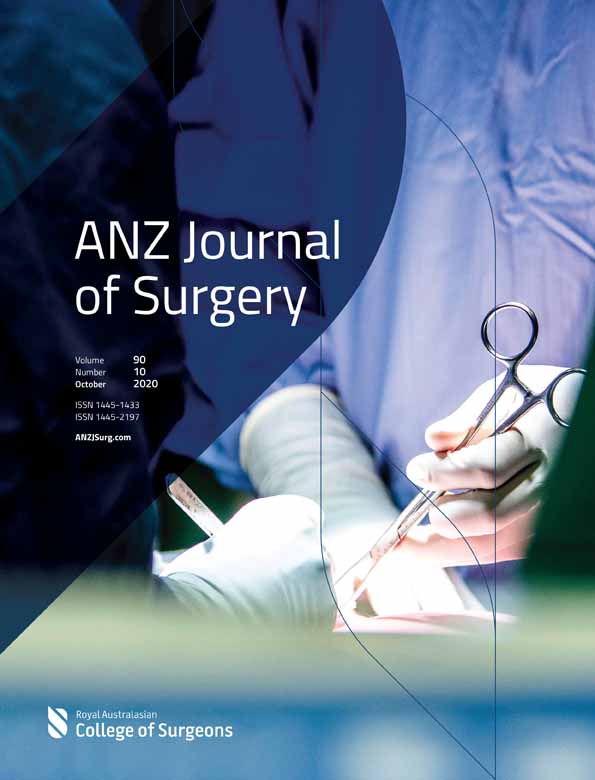Cohort study of 1241 patients to identify predictors of negative appendicectomy
Abstract
Background
Acute Appendicitis is the most common surgical presentation within Australia. Despite the increasing use of radiological investigations to aid clinical diagnosis, many appendectomies result in a histologically normal appendix. This study examines the histological negative appendicectomy rate (NAR) in a metropolitan hospital and determine factors associated with a negative appendicectomy (NA).
Methods
Patients who underwent emergency appendicectomy for suspected acute appendicitis at Logan Hospital, Australia, between February 2016 and March 2019 inclusive were included. Clinicopathologic and imaging variables were analysed for associations with NA.
Results
A total of 1241 patients underwent emergency appendicectomy of which 121 patients (9.8%) had a NA. The NAR for clinical diagnosis alone (no imaging) was 9.9%, 14.5% for ultrasonography alone and computed tomography scan alone was 4.9%. Univariate analysis revealed age <27 years (P < 0.001), absence of hypertension (P = 0.008), symptoms >48 hours (P < 0.001), absence of leucocytosis (P < 0.001), undergoing ultrasonography only (P < 0.001), undergoing computed tomography scan only (P < 0.001), macroscopically normal appendix (P < 0.001) and time to operation >24 hours (P < 0.001) were associated with NA. Multivariate analysis identified symptoms >48 h at presentation (odds ratio (OR) 1.98, 95% confidence interval (CI) 1.20–3.24; P = 0.007), absence of leucocytosis (OR 2.41, 95% CI 1.52–3.81; P < 0.001) and macroscopically normal appendix (OR 5.70, 95% CI 3.49–9.33; P < 0.001) to be associated with a NA.
Conclusion
The NAR reported is lowest in an Australian institution. The identified predictors of NA will be useful in identifying patients who would truly benefit from an appendicectomy versus those would have a higher rate of NA who may be suitable to be treated non-operatively to be spared the unnecessary morbidity of surgery.
Conflict of interest
None declared.




